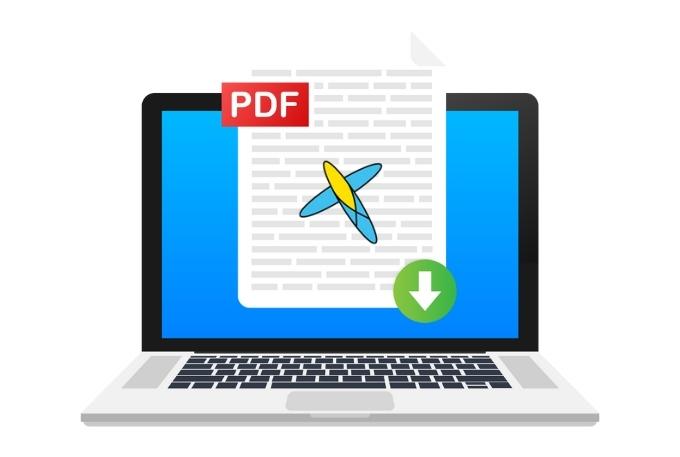You might want to be a product owner to help ensure the product is good. You would need to know how to do this by talking with people working on the product and by testing the product. You should also be able to work with the developers to help them understand what the customer wants.
Some become product owners because they want to move into management. Agile can be an excellent way to learn how to manage people and projects. As a product owner, you would need to prioritize the work that needs to be done and ensure that everyone is working on the most critical tasks. You would also need to be able to communicate with the stakeholders about the progress of the project.
To become a product owner, you should read more about agile and product ownership. There are many resources available online and in books. You can also attend workshops and conferences. Once you understand what is involved, you can decide if it is the right career move for you.
What is agile product ownership?
Agile product ownership is managing a product in an agile environment. The product owner is responsible for the product’s success and must understand what the customer wants, communicate effectively with the software development team, and ensure that the product meets customer expectations.
Many teams desire to improve their agile performance but cannot identify the source of their problems. Lack of attention to the Product Owner’s role is frequently the crucial piece that separates agile failure and agile success. Most Product Owners enter the position without any training. They lack product owner training and lack understanding of product management.
Teams focused on Scrum Master training and sprint execution are prone to waste and rework and develop the wrong things more quickly!
The Product Owner ensures the team produces value by working on the RIGHT product, features, and details. It is crucial for the success of the project.
Positives of good product ownership
- Continuous Progress: Sprints/iterations are completed on schedule and with the anticipated scope.
- Flow: Resources are used to their fullest extent in the development lifecycle, prompting decisions and ensuring a constant workflow.
- Shared Vision: The product development team is aware of the overall situation and uses this knowledge to create the appropriate features.
- Building the right product: They know how minor features fit into the roadmap. They are aware of their destination and purpose.
Negatives of bad product ownership
- Going Nowhere: Does your team prioritize speed or velocity over value and creating the correct thing?
- Never-ending sprints – Do your iterations or sprints go past the intended delivery date by weeks or months?
- Carry-Over Stories – Do your delivery teams struggle with not being able to complete deliverables in the current sprint/iteration or
- Does your team finish iterations on schedule but only after choosing to carry over some stories to the following iteration?
- Do your team members experience low morale due to not feeling like they are making progress?
- Does your team have a clear vision?
- Do they all grasp what the product is and what the customer needs?
- Do they understand how each iteration advances the goal and dependencies?
- Do they comprehend the connections between each item on the backlog and the overall purpose?
- Doubting Thomases – Do business executives wonder if Agile provides the promised benefits?
- Does scope creep still concern them?
- Is there confusion with the correct methodology?
- Are there more requests for improvements and defect lists?
- Has product quality/value increased or decreased from a business and consumer standpoint?
Five Product Owner Maturity Levels
There are five categories of product owners, each with a specific purpose, primary duties, and power.
Using this growth model, you can determine the kind of product owner or product owner you discover in your firm. Remember that a person’s type of product owner is partially determined by their (hierarchical) function within the business.
A Product Owner likely has some additional power already if they previously held a management position. It is not necessary to be or have been a manager to benefit from this; instead, it may assist product owners in advancing through the maturity model more quickly.
A Product Owner’s authority is not just based on their (prior) function. The manner you act significantly influences the leaders. The style of the person also affects it. We have found that power isn’t given out “for free.” Power increases must be gained. Additionally, you gain greater control by assuming more responsibility and demonstrating ownership.
The Scribe
The Scribe Product Owner function is frequently found in businesses just starting with Scrum or in organizations that have not fully adopted the Agile philosophy (and therefore do not apply Scrum properly). In these organizations, the role of the product owner is primarily seen as managing the product backlog, gathering stakeholder requests, and translating those requests into user stories for the development team. This kind of product owner frequently has little to no authority. In these situations, a steering committee or a project management office is typically in responsible for carrying out the mandate (PMO).
The Proxy
Similar to the Scribe Product Owner, the Proxy Product Owner (abbreviated: Proxy) is frequently seen in businesses that are just beginning to implement an Agile method of working and the Scrum Framework.
In comparison to the Scribe, the Proxy has slightly more power. For instance, the Proxy frequently has (limited) discretion over how the Product Backlog is ordered. However, other people, such as a steering committee, project sponsor, or business owner, are still in charge of deciding on the vision, the business goals, the expected outcomes/results, and the scope.
Proxy Product Owners who formerly held the positions of project manager or team lead are familiar with many enterprises. Usually, these roles or jobs are in charge of bringing a project to completion. Therefore, many firms believe that changing these individuals’ positions to “Product Owners” is logical. These Proxy Product Owners do not, however, have final authority. Changes often necessitate a request for approval.
To shift priorities, they need permission. They must also get authorization when they wish to alter the strategy, roadmap, or product backlog.
The Business Representative
The business representative is the following category of the product owner.
A representative from the business side of the organization who is knowledgeable about the business context, market, customers, and users is often the business representative.
This individual is often one of the organization’s “seniors” or “experts” who has links to clients or users. As a result, this person is usually familiar with consumers’ and users’ needs and preferences. Process owners and system owners are some examples of possible product owners.
Product Owners don’t always come from “the business,” but this is often the case.
It’s also possible that an IT employee with the maturity level “of a business representative” is serving in the capacity of a product owner. These individuals may have learned a lot about the (technical) product and hence make good Product Owners. Information managers, architects, and security specialists are a few of the IT personnel in this position. Remember that Steve Jobs and Bill Gates were also outstanding product owners and that these men were “IT people” to support the idea of having IT product owners.
Therefore, the Business Representative is in charge rather than the Proxy.
The business representative is often in charge of a system, a portion of the product, or a group of processes (es). This Product Owner may choose which tasks will be handled by the Development Team within this system or method. As a result, the Business Representative is in charge of the Product Backlog and has the power to handle its management alone.
It is only valid if the proposed improvements can be implemented within the spending limits set by management or a steering committee. The Business Representative does not have a separate budget that can be used however they like.
They frequently have to deal with a steering committee or management and need permission to make budget modifications. The Business Representative frequently has a list of tasks to do, projects to complete, or objectives to meet that have been established by someone else.
The Sponsor
In the beginning, business managers, IT managers, and clients (in a business-to-business scenario) frequently fill out the Product Owner type “Sponsor” Sponsor Product Owners often have more incredible options for scaling up and down the Development Team because they have their funding. It is the main distinction between the “Business Representative” and the “Sponsor” The Sponsor has a separate budget from the Business Representative. The authorities for both categories of product owners are comparable, save from fiscal accountability.
It does not imply that you should increase or decrease your workforce each sprint!
But it’s possible that; Product Owner would like to grow to a second or third team because of how well the product is doing. These “Sponsors” can therefore accelerate and delay projects much more due to their flexibility and power, which impacts the product’s return on investment and total cost of ownership. Along with controlling the funding, Sponsor Product Owners also have a more influential voice in “what” must be done.
They may specify the tasks to be completed or the business objectives to be met.
The Entrepreneur
The term “Entrepreneur” refers to the final category of product owners. This position is sometimes known as the “mini-CEO.”
Ultimately, we want enterprises to have this level of product ownership. The product owner, an entrepreneur, assumes complete accountability for and control over the product. This product owner has the most significant potential to influence clients, consumers, and the company.
An individual with a clear understanding of the market, clients, and product is considered an entrepreneur and product owner—someone with a strong work ethic, a sense of direction, and verbal and written communication abilities.
Entrepreneur product owners ultimately take charge of the product and are accountable for its profit and loss. They are in charge of maintenance, operations, decision-making, marketing, law, and sales, in addition to product development. Because of this, we often refer to this level as “mini-CEO.”
An individual product owner runs their own “mini-company” (which could be a mini-company within a large enterprise).

Growing responsibilities of a Product Owner and Authorities
But how can a Product Owner assume extra obligations?
That is relatively straightforward. You raise your obligations by gradually taking greater ownership and accountability for the product’s success. Develop the product vision, articulating the value of the product, for instance, and actively encourage your cross-functional team, stakeholders, and management to adopt it. Work cooperatively with your development process and critical stakeholders.
- Create Product Strategy and Product Features
- Create a product roadmap and schedule releases.
- Display the value you and your team bring to consumers and customers. Measure the value. It is possible by
- Create and Refine the Backlog
- Backlog – Funnel View
- Elicit and Prioritize Requirements
- Prepare, Analyze and Prioritize User Stories
- User Story and user experience Workshops
- User story writing and slicing
- User story prioritization
- Define Acceptance Criteria
- Prioritize ruthlessly
Establish transparency on these issues to demonstrate your accountability for the final output. Also, have a thorough understanding of the costs. Do it yourself instead of waiting for someone else to do it for you. Therefore, show initiative. By doing this, you’ll give yourself the greater latitude to make decisions and gain more power. We have encountered successful product owners that assume key roles and accountability. These Product Owners frequently began their careers as Proxies or Scribes. Many of them have grown to be entrepreneurs or sponsors.
What is the role of the Scrum product owner in Agile teams?
The Agile Product Owner has different activities and roles during the agile ceremonies, scrum teams, and development stages. The following gives an overview of what a Product Owner does during the agile ceremonies:
- Backlog Refinement: The Product Owner is responsible for providing information to the Development Team about the product backlog items that need to be refined. The product’s short, mid, and long-term views are refined in these sessions. Practical product backlog management sessions create shared understanding among team members. POs use refinement sessions to generate dialog about technical options for the features and stories.
- Sprint Planning: The Product Owner is responsible for providing information about the product backlog items that need to be sprinted.
- Daily Scrum/Standups: The Product Owner is not required to attend the daily scrum/standup meetings, but they may choose to do so. If the Product Owner is working as a developer, then they should attend and participate in the discussion as a scrum team.
- Sprint Review: The Product Owner is responsible for attending the sprint review and presenting the product increment to the stakeholders. The Product Owner must also be available during the sprint review to answer stakeholders’ questions about the product backlog items.
- Sprint Retrospective: The Product Owner is responsible for attending the sprint retrospective and providing feedback to the Development Team about their performance. The Product Owner also needs to be available to answer any questions the Development Team may have about their performance.
Conclusion
Product Owner is not merely a name that the developers of Scrum dreamed up. The word “owner” appears in the title of this position. Therefore, the role is about “owning” the product and accepting the obligations that go along with that. Therefore, the product owner works must demonstrate to your stakeholder of ‘ownership.’ It is not just about the product vision, Product Backlog, and financial aspects. It’s about your attitude, your mindset, and behaviors. So it may help to reflect regularly. Look yourself in the eye. Have you taken all reasonable steps to enhance the product? Are any setbacks the fault of others, or might you have acted otherwise? Take ownership!
FAQ about Product Owners

What are some of the most critical Product Owner responsibilities?
- Being responsible for the success or failure of the product
- Creating and maintaining a product backlog
- Prioritizing the product backlog items
- Working with the Development Team to ensure that the product backlog items are well understood
- Good working knowledge of scrum guide if working in scrum teams
- Communicating with stakeholders about the project status
- Making sure that the product increments are of high quality.
What skills can support Product Owner needs?
Some of the skills that are needed by Product Owners include:-
- Strong communication skills
- organizational skills
- problem-solving skills
- negotiation skills
- Design thinking skills
- Value thinking and analytical skills
- Facilitation skills
- System thinking skills
What are Product ownership techniques?
- Vision canvas or Collaborative Product Vision
- Personas
- Story mapping
- Story slicing or story splitting
- Prioritization Techniques
- Value estimating techniques
How can I become a successful Product Owner?
There is no one formula for becoming a successful Product Owner. However, there are some things that you can do to increase your chances of success. These include:
- Increase your understanding of agile principles and practices
- Attend agile workshops and conferences
- Read books and articles about agile and product ownership
- Get involved in agile online communities on LinkedIn.
- Find a mentor who can help you understand agile and product ownership
- Get certified in agile and product ownership
How do I know if I am doing an excellent job as a Product Owner?
One way to know if you are doing an excellent job as a Product Owner is to ask your Development Team. They will be able to give you feedback about your performance. Another way to know if you are doing a good job is to look at the results of your work. If the product is successful, then it is likely that you are doing a good job. Finally, you can also ask for feedback from your stakeholders. They will be able to tell you if they are satisfied with the product or not.
What are some of the challenges that Product Owners face?
Some of the challenges that Product Owners face include:- Making sure that the product backlog is up-to-date and accurate- Prioritizing the product backlog items- Working with stakeholders who have different opinions about what should be included in the product- Getting buy-in from the Development Team.
There are many more questions that you can explore and use. If you would like to practice your coaching skills with someone, you can contact Leadership Tribe and we are happy to get on call with you and discuss the best way to join our high performing Agile, Kanban or Scrum training sessions.



